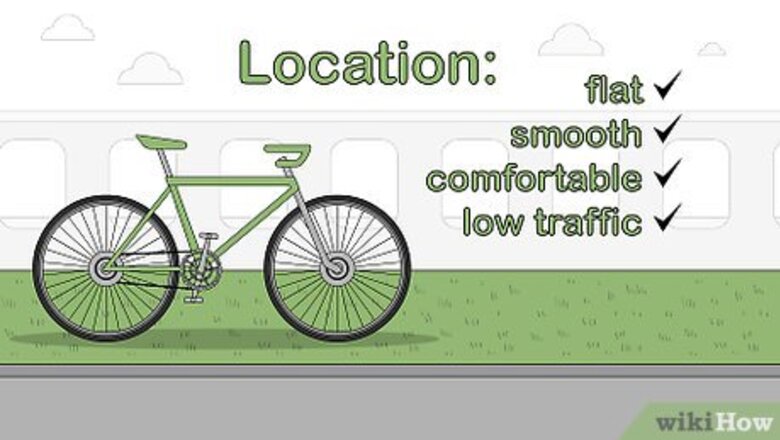
views
- Safety first! Practice on flat, smooth ground in daylight. Wear a helmet and elbow and knee pads to protect yourself in case you fall.
- Push off of the street with one leg to propel forward. Once you’re gliding, start pedaling with the other foot. Try to pedal straight forward as long as possible.
- Use the hand brakes to stop. Once you’re comfortable with a straight line, it’s time to tackle steering and gentle slopes!
Riding Safely
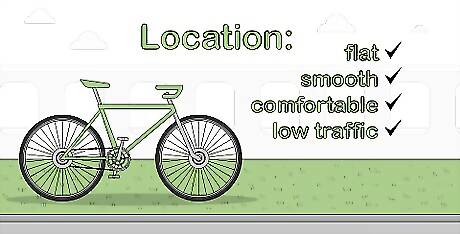
Find a fitting location. When you’re learning as a beginner, you want to find a place that’s comfortable and far from traffic. A good place to start is a flat, smooth stretch of ground such as your driveway or your sidewalk. Those who don’t have space at home can practice in a parking lot or park. Starting off on grass or smooth gravel helps since falls there hurt less. These surfaces make balancing and pedaling harder though. If you plan on practicing balance and pedaling on hills, find locations with gentle slopes. Check your local laws to see if it is legal to ride on sidewalks or other paths.
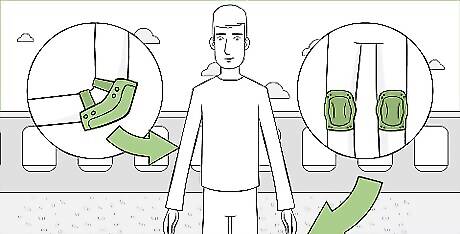
Wear riding clothing. Knee and elbow pads insulate joints and protect against scrapes, so they are recommended for all riders. Long-sleeved shirts and long pants also help protect against falls and can be combined with pads. Avoid baggy pants and long skirts. These may get caught in the gears and tires, and may result in you falling down. Avoid open-toed shoes. These leave your feet exposed to the bike and ground. As an alternative, you can get a bicycle that has a skirt and chain guard that prevents long clothes from getting caught in the gears.

Put on a helmet. Helmets are recommended for beginners and experienced bike riders alike. You never know when an accident will happen. A broken bone can usually be fixed, but head trauma, common in bicycle accidents, leaves a lasting impact. Also, some areas have laws requiring riders to wear helmets. Helmets are measured to fit the head. A good one fits tightly and comes down to an inch (two and a half centimeters) above your eyebrows. It will also have straps that keep your helmet tight while still letting you move your mouth. Commuter helmets are one common type. They are rounded, made of foam and plastic, and can be found online or in retail stores where bikes are available. Road helmets are elongated and often have vents. They’re also made with foam and plastic but are popular on roads or in competitive racing. Seek them online or in retail stores. Youth (age 10-15), child (age 5-10), and toddler (under 5) helmets are all smaller commuter or road helmets. Toddler helmets are the only ones with more foam. Mountain bike helmets and professional sports helmets come with visors and neck bracing for tough off-road conditions. Even in areas with safe cycling infrastructure, a helmet may still be a good idea, especially if the bike paths are not well maintained.
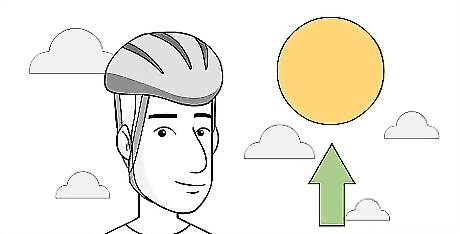
Go out during the day. Riding is possible at night but not recommended for beginners. You’ll be spending a lot of time learning to balance. This means that, as you get acclimated, the bike can swerve into traffic or other dangers you'll have a hard time seeing. At night, drivers also have a more difficult time seeing you. If you have to go out at night, use retroreflective stickers on your bike and use bike headlights, and ride in a well-lit area. Certain bikes, such as utility bicycles, make the rider more visible in an upright sitting position and give the rider good visibility, even at night.
Mounting a Bicycle
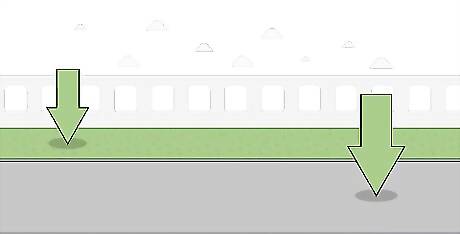
Begin on a flat surface. Flat surfaces such as a driveway, sidewalk, residential street, or park trail are stable. There are no slopes, so the falls are shorter and you will have an easier time balancing and coming to a stop. Short grass and smooth gravel are also surfaces you can use. Falls will hurt less, but these surfaces force you to pedal harder to move the bike. It might not be the best idea to learn to cycle on a commuter trail, especially during rush hour, as there will be dozens of other bikes and scooters as people head to where they are going.

Adjust the bike seat. Lower the bike seat far enough that whoever's riding can put both of their feet flat on the ground while seated. A low seat allows you to stop yourself with your feet before you fall. Adults don’t need to use training wheels, but young children can use these or specialty balance bikes. It is possible to remove the pedals to keep them out of the way, but it isn’t required.
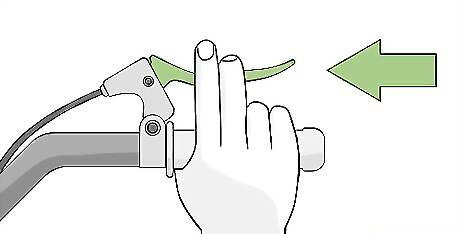
Test the brakes. Find out how the brakes work on the bicycle. Stay off the bicycle. Keep it next to you and walk it. Push the brake buttons to get used to their location, how they feel, and how the bike reacts to them. Once you’ve learned this, you’ll feel more comfortable because you’ll be able to make an emergency stop when needed. If your bike has brakes on the handlebars, test each one to see which controls the front and which controls the rear wheel. These can be switched by professionals. Notice how squeezing the back brake causes the rear wheel to skid. Squeezing the front brake causes the bike to pitch forward. If your bike doesn’t have brakes on the handles, it should have backpedal (coaster) brakes. To brake, press down on the pedal closest to the back end of the bike as if pedaling backwards. If your bike is a fixed wheel and hasn’t been modified, it has no brakes. Instead of braking, you will need to either slow the pace of your pedaling or skid by leaning forward and holding both pedals horizontally with your feet.

Plant one foot on the ground. It doesn't matter which side you choose, but your dominant side will feel more natural. A right-handed person, for instance, can stand on the left side of the bike. Lift up your right leg, reach it over the bike, and put it on the ground on the other side of the bike. Hold the bike upwards between your legs. Feel the weight of the bike between your legs and try to keep it balanced as you lower yourself. Having feet on the ground prevents the bike from toppling while you acclimate. Maintain your weight in the center of the bike, evenly distributed between your left and right sides. Sit up straight instead of leaning.
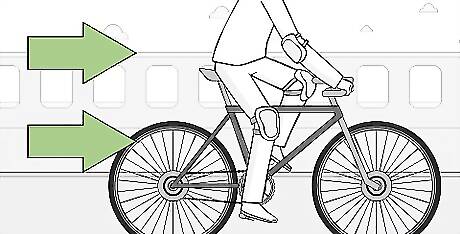
Start gliding. Rather than pedal, push yourself off by foot. Tuck your feet upwards and onto the pedals. While in motion, maintain the bike’s balance as long as you can. Once you feel the bike beginning to tip, catch it by putting one foot to the ground, then push off again.
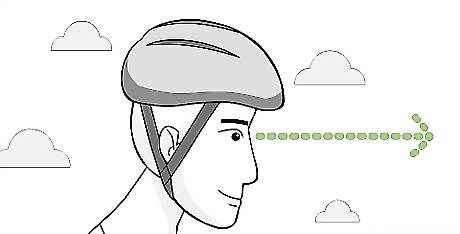
Keep your eyes straight ahead. When you look at obstacles, your bike heads towards them. Concentrate on looking towards where you want the bike to go. It takes some practice to avoid distractions from road hazards or other sights. Before you have complete control, go where the bike goes. When starting, the bike tends to go to the side or in circles. Instead of stopping, let it go and try to maintain balance while it does. If you are helping a child or friend, you can hold onto their lower back to help them stay steady while they practice.
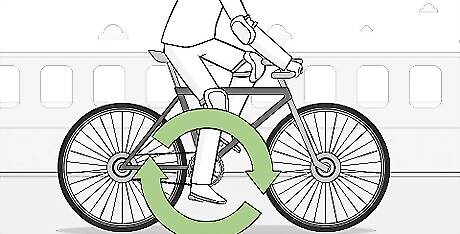
Start pedaling. Start with one foot on the ground. Your other foot should be flat on a pedal pointed upwards. Push off, put that foot on the other pedal, and go! Keep going as long as you can maintain balance. Going faster makes balancing easier, but don’t go so fast that you lose control.
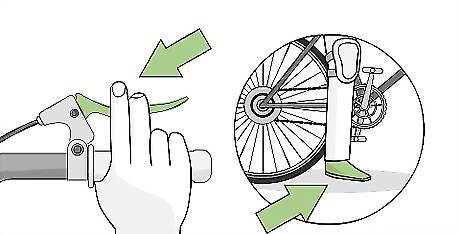
Dismount from the bike. Don't stop by foot. A better practice is stop by using the brakes. Stop pedaling, shift your weight onto the lowest pedal, and squeeze both handbrakes, if the bike has them. Once the bike has stopped, raise yourself a little and step off onto the ground. Putting your feet down too early while using the brakes stops the bicycle abruptly. Your momentum won't stop and you'll whack into the handlebars.
Learning to Ride on Slopes
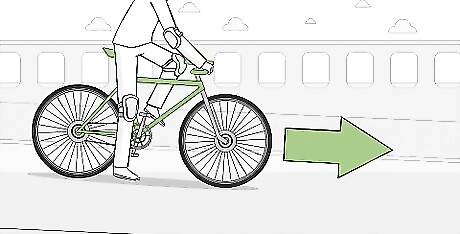
Practice gliding down gentle slopes. Walk the bike to the top of a slope, mount it, and glide down, allowing the bike to slow naturally in the flat area at the bottom. Dismount and repeat as necessary until you get used to balancing and controlling the bike. Keep your weight focused in your feet. Stay pressed against the seat, keep your elbows bent, and your body relaxed. When you are confident you can coast to the bottom, try riding down with your feet on the pedals.
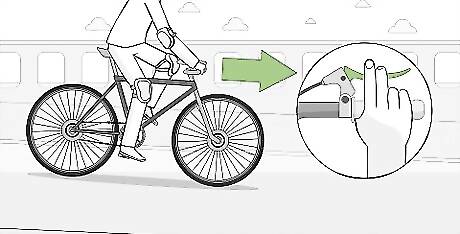
Brake while gliding down hills. Once you have become comfortable keeping your feet on the pedals, try again, this time gently squeezing the brakes while descending. You'll learn to slow the bike without swerving out of control or pitching over the handlebars.
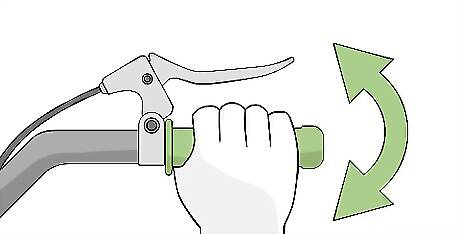
Try steering. Once you can coast, pedal, and brake in a straight line, try going down the hill again. Move the handlebars until you change the direction of the bike without losing control. Feel how the slope changes the way the bike acts and adjust your balance to match it.
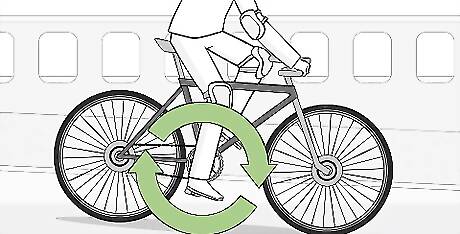
Pedal through the bottom of the slope. Use the techniques learned while gliding to pedal and steer without stopping at the bottom of the hill. Transition to the flatter surface while practicing sharper turns, then brake to a stop.
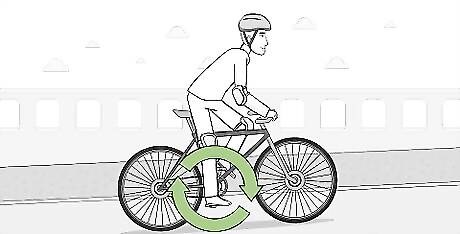
Pedal up the slope. From the flat bottom of the hill, start pedaling. The slope requires additional work. Lean forward into the pedaling or even stand up to gain extra power. Bike up and down the slope several times until you feel comfortable. Once you feel confident, bike halfway up the slope, come to a stop, and start pedaling upwards again.


















Comments
0 comment